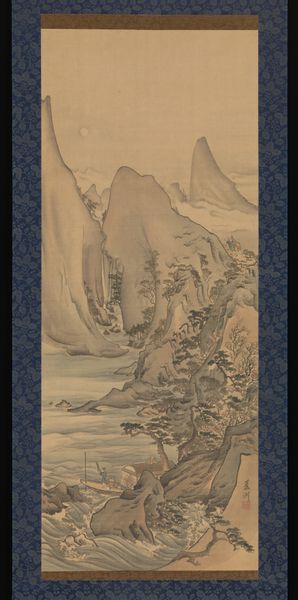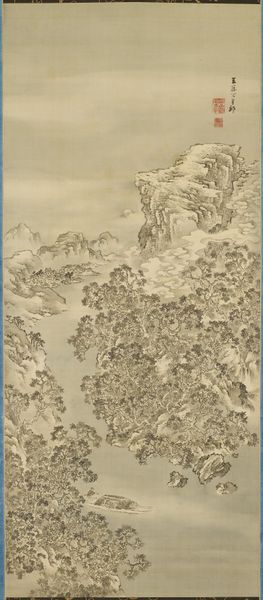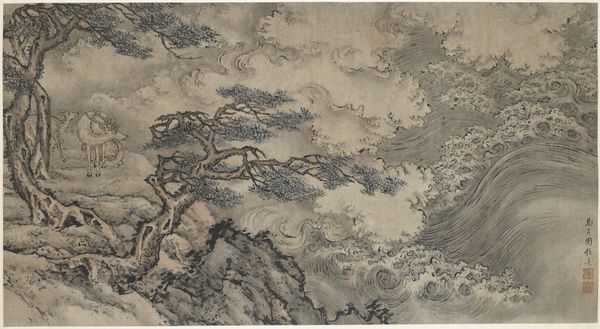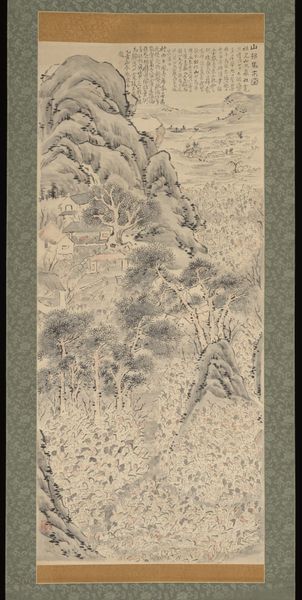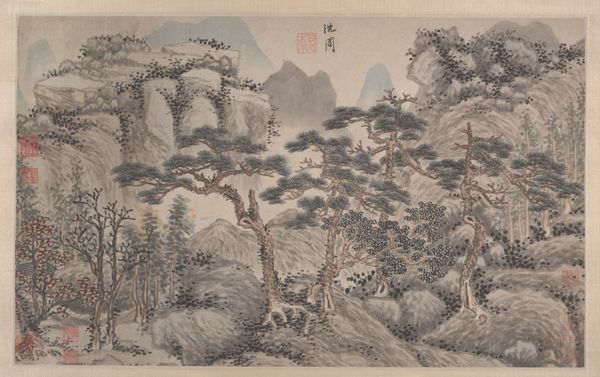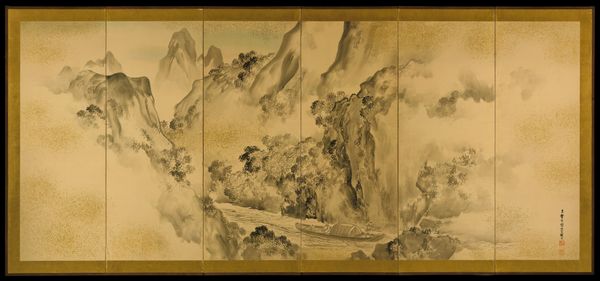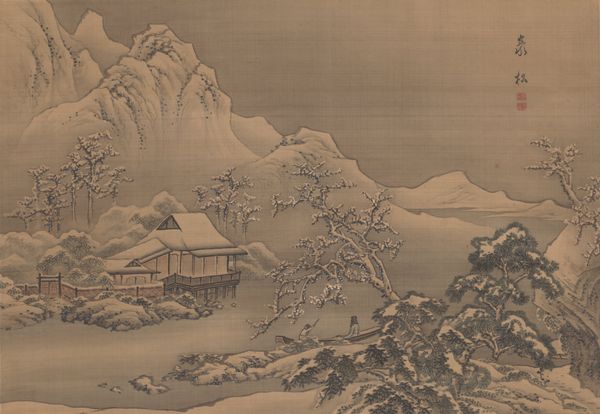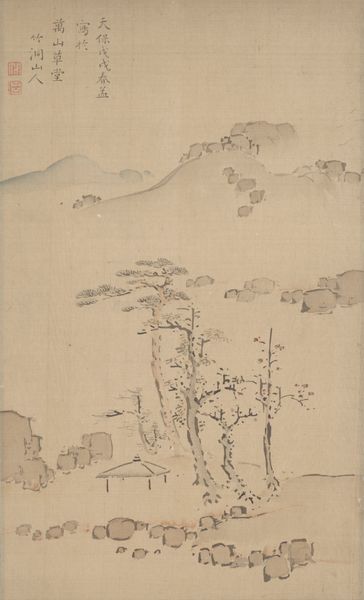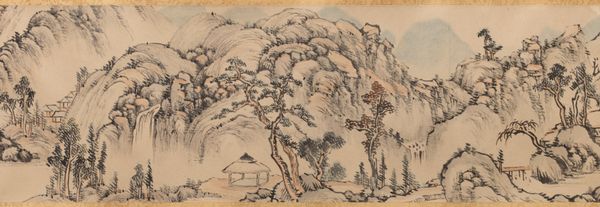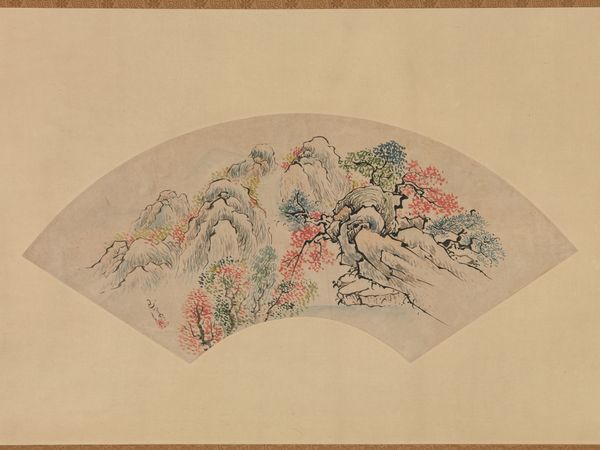
Dimensions: 8 5/16 × 138 3/16 in. (21.11 × 351 cm) (image)
Copyright: Public Domain
Curator: Here we have Okada Hankō's "Four Seasons," an ink and watercolor painting created in 1844, and housed here at the Minneapolis Institute of Art. Editor: My first impression is that it feels almost like a dreamscape. The mountains fade into mist, and even though it's monochromatic, it’s not bleak. There’s a delicacy to it. Curator: The artwork exemplifies the yamato-e style, deeply rooted in Japanese artistic traditions. Looking at the iconography, one recognizes its dedication to landscapes, presenting idealized views deeply influenced by philosophical and poetic ideas. Editor: The mountains themselves immediately bring to mind concepts of stability and endurance, yet their misty rendering softens that strength. Then we have small, almost hidden buildings—tiny signs of human presence, but very subtle. What are the connotations for a Japanese audience? Curator: These architectural details underscore a certain harmony between humanity and nature that resonated through Japanese society during this period. Yamato-e paintings frequently celebrated the natural beauty of Japan but were often commissioned or produced within specific social contexts. The aesthetic preferences and cultural values shaped this artist’s output and its reception in Japanese society. Editor: Absolutely. There’s a careful balance, visually. The blossoming trees symbolize renewal and ephemeral beauty, while the evergreens represent longevity, both potent visual cues. What do you think the artist was expressing by using this composition? Curator: Hankō used these kinds of visual languages, that he understood, in order to convey a deep understanding of philosophical concepts relating to the cycle of life, particularly influential in artistic patronage of the era. The seasons' transformations become metaphors for societal change, growth, and also for resilience during times of social uncertainty. Editor: So, beneath its aesthetic appeal, this artwork embeds a deeper commentary, almost a meditative reflection. It invites you to reflect not just on nature, but also on yourself. Curator: It speaks to the artwork's significance, acting as more than just a painting of landscapes, as a reflection of society, culture, and even political views, all while still being beautiful to experience as a whole. Editor: Precisely, seeing past face value enables it to leave such a poignant impression, doesn’t it?
Comments
No comments
Be the first to comment and join the conversation on the ultimate creative platform.
